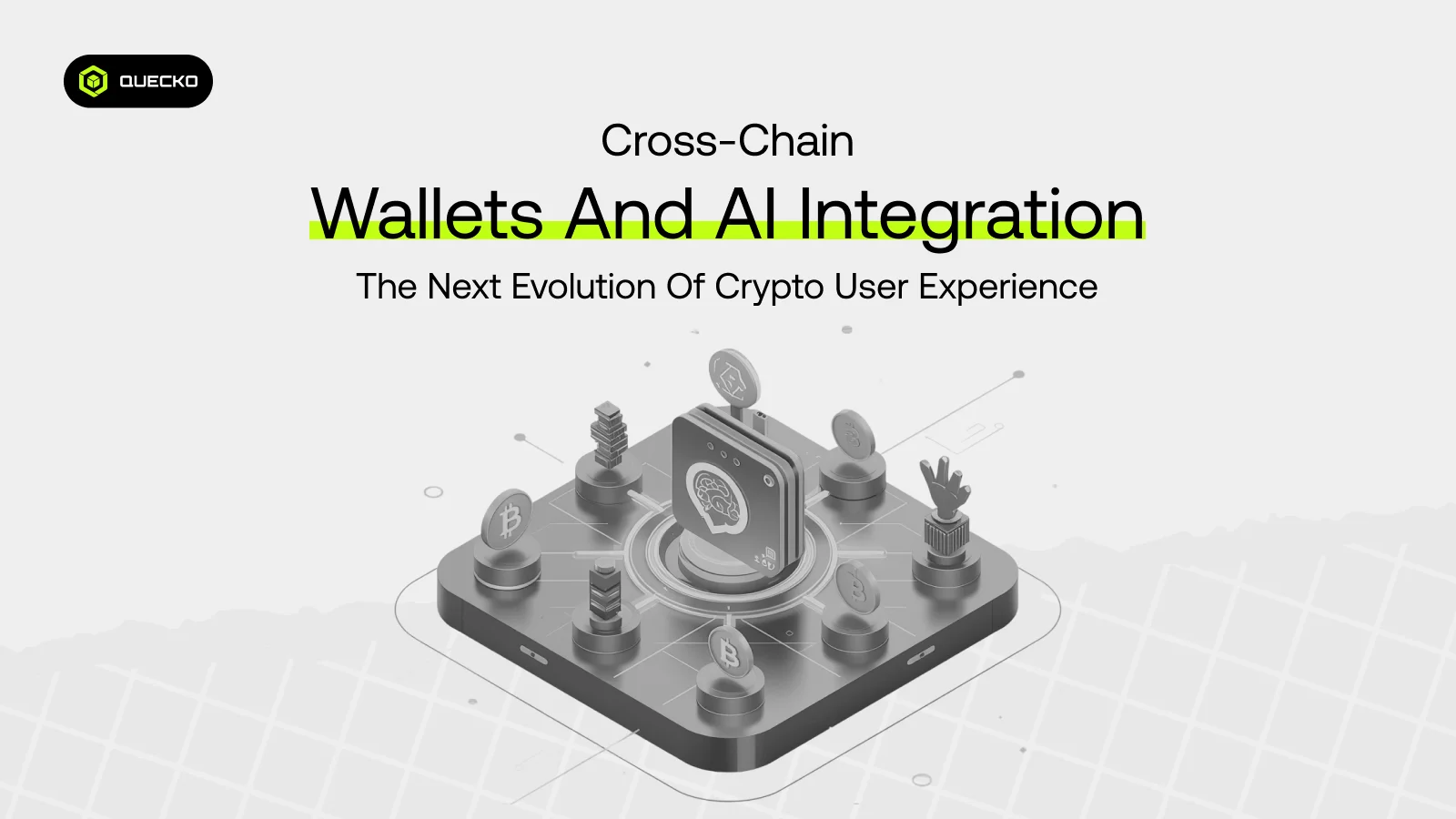Behind the Gas Fees: What Happens During a Congested Block?
Explore the real reasons behind rising gas fees during blockchain congestion. Understand how limited block space and transaction demand drive up costs.

Blockchain Technology Revolution has transformed the ways we conduct transactions, design decentralized applications (dApps), and implement smart contracts. But there is a stringent problem buried in the innovation that bothers both users and developers: the gas fees. Such transaction costs are getting out of control, particularly when the blockchain network is clogged. However, what exactly can occur within a clogged block, and how does it reflect on gas fees, transactional costs, and user experience?
To truly understand this issue, it’s important to look beneath the surface of what happens during heavy network activity. Congestion doesn’t just slow things down; it reshapes how transactions are selected, priced, and confirmed on-chain.
This blog will discuss how blockchain congestion works. We will also see the impact of the addition on the pricing of gas, the inclusion of transactions, and the measures that users can take to reduce the cost.
Understanding the Basics: Gas, Blocks, and Transactions
In order to learn about congestion, it is vital to be able to comprehend the way blockchain transactions are handled first. Each transaction, such as transferring cryptocurrency, executing smart contracts, or communicating with decentralized applications, requires computational resources. The units of measurement of this computational effort are expressed as gas.
What is a Gas Fee?
Gas is a unit of computation effort or computational work necessary to perform the operations of a blockchain. It powers such operations as crypto transfer, communication with dApps, or smart contract implementation. Each network operation has a predetermined gas fee depending on the complexity of the operation. The users also need to provide a price of gas that they can afford, and it is one of the parameters that determines the speed of the transaction.
What is a Block?
Block refers to a batch of transactions bundled up. A limit is placed on the amount of computation that each block can have, otherwise known as the gas limit. This limit is important in delineating the block size in such a platform as Ethereum. When one of the blocks achieves the limit of gas, no other transaction can be added until the block is produced. The so-called blocks are generated periodically, and they are a critical part of the process of confirming and documenting the transactions on the blockchain.
How Are Transactions Included?
The users specify a gas price (gwei or another kind) with their transactions. As network validators compete to earn a larger portion of rewards, high-paying transactions are placed first in the bidding pool. It translates to transactions that average a large amount of gas fees having preferential tendencies to be included in the next block, whereas the transactions that average low amounts of gas fees may be delayed. This competition is enhanced during peak demand, thereby increasing the prices of gas even further.
What Triggers Blockchain Congestion?
Congestion happens when network traffic and transaction complexity exceed the processing limits of the blockchain. Common triggers include:
- NFT launches
- Popular dApp activity
- Market volatility events
During congestion, transaction delays increase and fees soar, especially for users offering lower gas prices.
Effects of Congestion on Gas Prices
- Increased base fees due to high demand
- Higher priority fees to incentivize inclusion
- Price wars as users outbid each other to confirm transactions
Inside a Congested Block: Step-by-Step Breakdown
- Transaction Queueing: Pending transactions accumulate in the mempool.
- Validator Selection: Validators choose high-paying transactions to include in the block.
- Gas Limit Constraints: Only as many transactions as the gas limit allows can be processed.
- Base Fee Adjustment: Ethereum’s EIP-1559 mechanism adjusts the base fee upwards in times of high demand.
- Block Creation: A new block is created at regular block time intervals, filled with top-bid transactions.
Impacts on Blockchain Elements
To truly grasp the effect of congestion, it’s important to understand how it influences key components of the blockchain ecosystem.
Block Sizes and Limitations
- Blockchains like Bitcoin have a block size limit (e.g., 1 MB).
- Ethereum operates on a block gas limit, prioritizing computational complexity.
Slow Processing Times
Congestion leads to slow processing times for low-fee transactions, delaying blockchain confirmations.
Fee Structure Dynamics
- Fixed fee structure in some chains
- Dynamic market-based structure in Ethereum
Critical Challenges
- Inconsistent user experience
- Increased energy consumption in PoW chains
- Difficulty for developers to predict the cost
Real-World Use Case: Ethereum Congestion Events
Ethereum has shown serious congestion during high traffic of the network, which causes radical increases in the gas fees. An example of such is when BRC-20 tokens went awry. Even though BRC-20 tokens are considered to be more related to Bitcoin, when rumors of famous experiments with such tokens circulate, they seem to creep over to the Ethereum ecosystem, where users are rushing to get engaged in trading, minting, or deploying contracts. Such a piecemeal transaction request overwhelms the network and increases the base fee exponentially.
The second common cause of congestion is the NFT minting frenzy. When an NFT collection trend is released, thousands of users attempt to mint simultaneously, and each person is most likely willing to pay more gas to confirm their transaction as fast as possible. This creates serious network congestion, driving the cost of gas to a point that is unaffordable for common users. Volatility swaps also add congestion to stablecoin.
In the event of severe market swings, visitors will seek to switch untenable assets into stablecoins (such as USDT or USDC) and create huge volumes of transactions in a brief period. Validators will The validators take transactions with the highest gas bids, and leave the transactions with lower fees stuck or delayed. In such cases, even such simple transactions as transferring ETH or minting a single NFT have jumped to over $200. This increase is caused not only by the growing activity of users but also by the “adaptive fee model” of Ethereum, which causes the base fee to increase with each congested block, seeking to curb demand.
How to Navigate a Congested Network
Network congestion can be frustrating, but with the right strategies, you can avoid excessive fees and delays. Understanding when and how to transact can make a big difference in cost and user experience.
Time Your Transactions: Sending transactions during off-peak hours, such as late nights or weekends, can help you avoid high gas fees caused by peak network demand.
Monitor Network Conditions: Use tools like gas trackers and real-time dashboards to stay informed. They help you identify optimal times and avoid overpaying on gas fees.
Use Layer-2 Networks: Solutions like Arbitrum and Optimism for Ethereum, or the Lightning Network for Bitcoin, offer significantly lower fees. They also enable faster transaction speeds by offloading activity from the main blockchain.
Choose Alternative Chains: Consider using platforms like Solana for high throughput, Avalanche for parallel execution via subnets, or Fantom for low-cost smart contract deployment. These chains often offer faster and cheaper transactions compared to congested networks like Ethereum.
Developer-Side Considerations
Before navigating blockchain congestion effectively, several key considerations must be kept in mind to optimize both cost and performance.
Optimizing Smart Contracts
- Reduce redundant computation
- Use gas-efficient storage
Choosing Blockchain Protocols
- Consider PoW vs PoS based on computational efforts
- Evaluate the network with transactions that match your dApp’s usage pattern
Test Under Load
- Simulate network congestion to understand how your dApp will perform
Future Outlook: Ethereum 2.0 and Scalability
Currently under a Proof of Stake (PoS) consensus mechanism, Ethereum 2.0 is one of the biggest steps toward fixing the scalability and congestion problem that has plagued the network since the very beginning. It is also expected to facilitate the speed with which transactions can be processed, more reflective of the experiences available through the blockchain, since people can transact using it in times of high demand.
The other major upgrade is that there is less energy consumption. Ethereum 2.0 significantly reduces the amount of computational power it takes to affirm transactions by substituting the energy-intensive Proof of Work (PoW) model with a proof of stake (PoS), which is a more sustainable practice. The scalability is also achieved by providing a layer-2 solution, such as rollups, and possibly future sharding. These updates are intended to scale up Ethereum without congesting the lower blockchain layer and allowing more transactions to be carried out per second.
All these developments notwithstanding, though, congestion can still be found to exist as more people are adopting the services. New extremely critical challenges may arise due to the increased computational resource usage and the increased number of smart contract executions. To keep the ecosystem efficient and provide a good user experience, it will require constant innovation and optimization.
Conclusion
Real-time measures of blockchain health, such as gas tokens, transaction fees, and network congestion, can all be seen as indicators of the health status of the blockchain. Regardless of whether you are creating NFTs, smart contract deployment, or assessing customer satisfaction with the gas prices, knowledge of the workings of these systems helps to make prudent decisions. Through innovations such as Layer 2 (L2), Ethereum Virtual Machine (EVM), and improved user-focused design, congestion issues are being solved in the blockchain gradually.
Stay informed. Apply appropriate equipment. And never forget to evaluate fee changes, the action of validators, and IP rights before your future dApp release or investment plan.
Date
4 months agoShare on
Related Blogs

How Blockchain Is Rewiring Corporate Banking
6 days ago

AI And Blockchain Synergy: Building Smarter & Transparent Systems
7 days ago

The Quantum Leap: How Blockchain Must Evolve to Stay Secure
11 days ago

The Future of Web3 UX Is Here: AI Meets Cross-Chain Wallets
19 days ago








